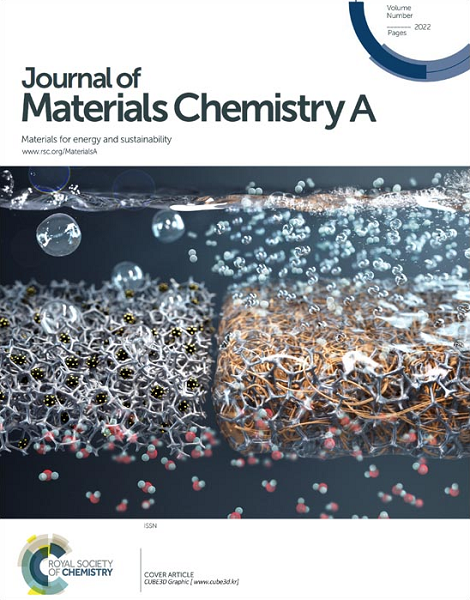Unraveling the CO2 methanation and capture ability of NiO@metal oxides
IF 10.7
2区 材料科学
Q1 CHEMISTRY, PHYSICAL
引用次数: 0
Abstract
Present study follows the development of different core-shell nanoparticles by keeping Ni/NiO as core and with other active materials such as SiO2, Co3O4, CeO2 and ZrO2 as shells for CO2 methanation. Out of all, both NiO@SiO2 and NiO@CeO2 showed highest catalytic activity of >62% of CO2 conversion and >99% selectivity towards CH4 with high GHSV of 47760 h-1 at 325ºC. The catalytic activity studies are presented using both lean and realistic feed conditions. XRD revealed the presence of NiO as dominant core. All these catalysts are further subjected to other characterization techniques such as SEM, TEM, XPS, BET, H2-TPR, H2 pulse, CO2-TPD-MS to understand the morphology, ionic nature, physical properties, reduction nature, active sites dispersion, finally adsorption of CO2 and desorption of surface intermediates. The investigation into the formation and consumption of various intermediates revealed that the CO2 methanation reaction in DFT studies proceeds via a combination of the CO and formate pathways. These findings are correlated with in situ FTIR studies by unveiling the structure-property relations and methanation mechanisms. At 25°C, NiO@SiO2 exhibited a superior CO2 capture of 301.96 mg of CO2/g at 50 bar, while NiO@Co3O4 adsorbed 90.40 mg of CO2/g at 1 bar. Interestingly, H2 adsorption was nearly uniform across all these materials even at 50 bar and 25°C. The core-shell materials show both capture and CO2 hydrogenation ability towards methane formation.求助全文
约1分钟内获得全文
求助全文
来源期刊

Journal of Materials Chemistry A
CHEMISTRY, PHYSICAL-ENERGY & FUELS
CiteScore
19.50
自引率
5.00%
发文量
1892
审稿时长
1.5 months
期刊介绍:
The Journal of Materials Chemistry A, B & C covers a wide range of high-quality studies in the field of materials chemistry, with each section focusing on specific applications of the materials studied. Journal of Materials Chemistry A emphasizes applications in energy and sustainability, including topics such as artificial photosynthesis, batteries, and fuel cells. Journal of Materials Chemistry B focuses on applications in biology and medicine, while Journal of Materials Chemistry C covers applications in optical, magnetic, and electronic devices. Example topic areas within the scope of Journal of Materials Chemistry A include catalysis, green/sustainable materials, sensors, and water treatment, among others.
 求助内容:
求助内容: 应助结果提醒方式:
应助结果提醒方式:


